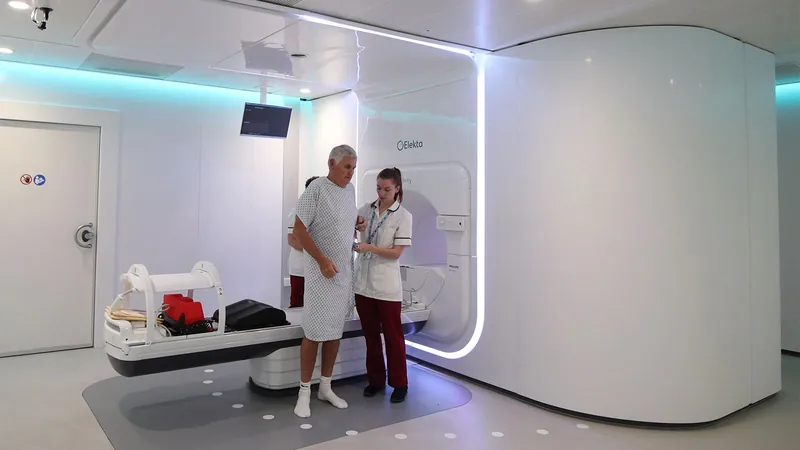
Unlocking the Secrets of Neptune and Triton: The Case for the TUNE-PIANO Mission
2024-11-11
Author: John Tan
In the picturesque Austrian Alps, a group of visionary students and professors has been converging for 40 years to brainstorm groundbreaking space missions. This year, during the prestigious Alpbach Summer School, one compelling concept emerged: a dual mission to explore Neptune and its intriguing moon, Triton, leveraging advanced technologies inspired by the recently launched Jupiter Icy Moons Explorer (JUICE).
Why is this mission essential? It's been over three decades since Voyager 2 made its historic flyby of Neptune in 1989, a probe that was launched in 1977. The tantalizing data Voyager gathered offered just a glimpse into Neptune's enigmatic nature, such as its unusual 47-degree tilt in magnetosphere and a relatively opaque interior that suggests it differs from other gas giants. The dearth of data leaves our understanding limited, calling for an updated examination of the eighth planet in our solar system.
Triton, Neptune’s largest moon, presents another layer of mystery. Its retrograde orbit hints at its origin as a captured Trans-Neptunian Object rather than a natural satellite formed with Neptune. Voyager's flyby revealed that Triton is not merely a passive moon; it exhibits remarkable geological activity, launching dark plumes into space whose substances are yet to be fully understood.
The proposed mission, dubbed the Triton Unveiler & Neptune Explorer (TUNE), is ambitious. The mission design comprises a primary orbiter that will execute 600 orbits around Neptune, using its 40 flybys of Triton to adjust its trajectory. The spacecraft will carry sophisticated instruments, like radiometers and spectrometers, aimed at achieving nine critical scientific objectives. These range from analyzing atmospheric temperatures on Neptune to unraveling the surface composition of Triton.
Adding to TUNE's capabilities, a secondary probe named PIANO (Probe for Inner Atmospheric Neptune Observations) will be launched toward Neptune, collecting invaluable data during its descent. Equipped with devices like a nephelometer and helium sensor, PIANO will provide insights into this planetary giant’s internal structure.
Crucially, much of the technology needed for the TUNE-PIANO mission already exists, thanks to the groundwork laid by the JUICE mission. This technological head start not only promises lower development costs but also underscores the urgency of the mission's timeline. Triton’s unique plumes will soon enter a prolonged period of dormancy, expected in the 2070s, presenting a narrow window for meaningful exploration.
Given the lengthy development and travel times intrinsic to such deep-space missions, the push for launch becomes ever more pressing. Regrettably, despite the innovative spirit displayed at Alpbach, the concept has not yet captured the interest of major space agencies, leaving TUNE-PIANO’s future uncertain. Without institutional support, this visionary mission may remain an unresolved dream, echoing the aspirations of one summer in the heart of the Alps.
As we stand on the brink of a new era of space exploration, the call to journey to Neptune is not just scientific curiosity—it's a quest to unearth the cosmic stories that await in the distant realm of our solar system. Will we dare to embark on this odyssey? Only time will tell.



 Brasil (PT)
Brasil (PT)
 Canada (EN)
Canada (EN)
 Chile (ES)
Chile (ES)
 España (ES)
España (ES)
 France (FR)
France (FR)
 Hong Kong (EN)
Hong Kong (EN)
 Italia (IT)
Italia (IT)
 日本 (JA)
日本 (JA)
 Magyarország (HU)
Magyarország (HU)
 Norge (NO)
Norge (NO)
 Polska (PL)
Polska (PL)
 Schweiz (DE)
Schweiz (DE)
 Singapore (EN)
Singapore (EN)
 Sverige (SV)
Sverige (SV)
 Suomi (FI)
Suomi (FI)
 Türkiye (TR)
Türkiye (TR)